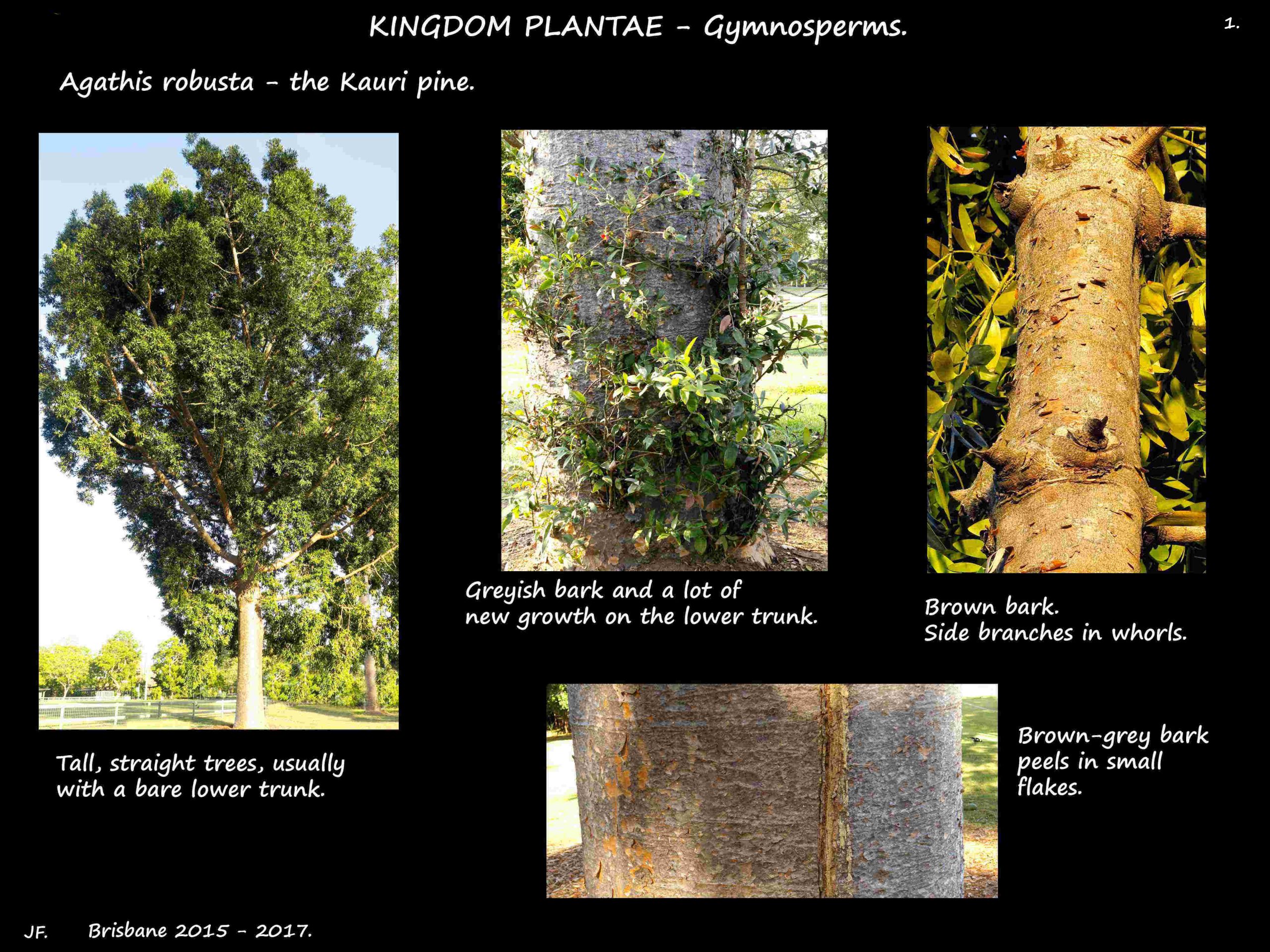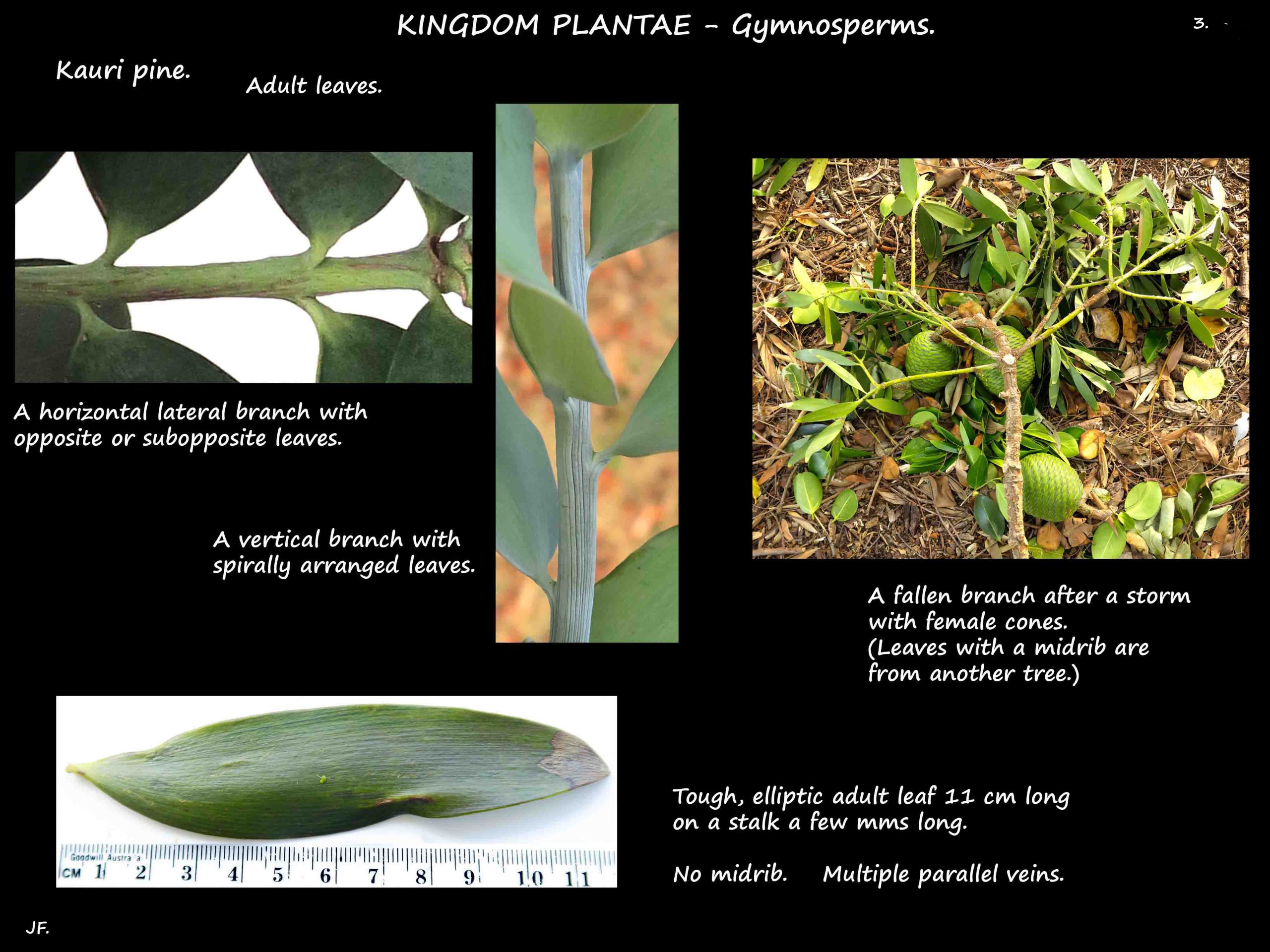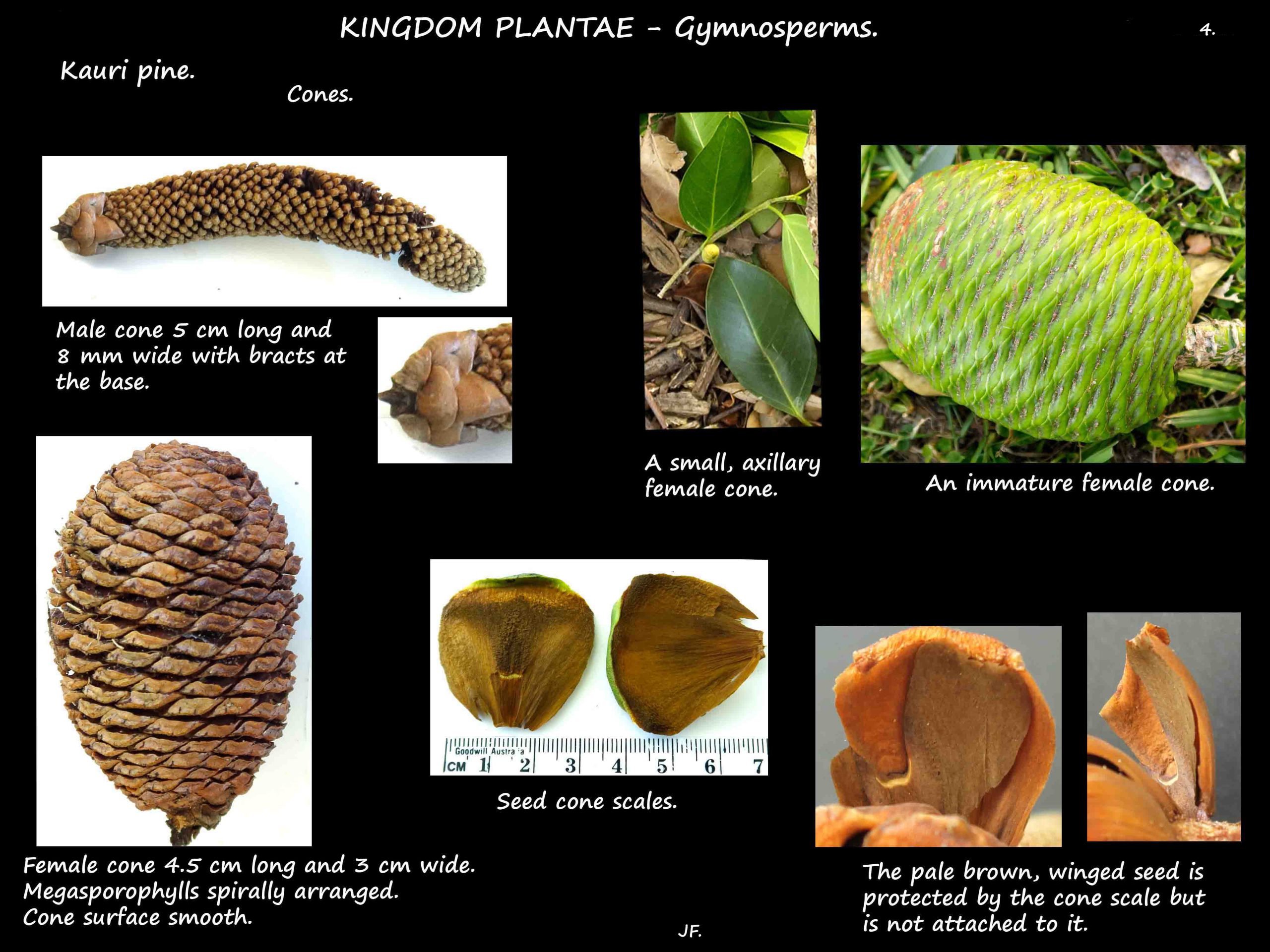Agathis robusta.
Kauri pines are evergreen trees up to 40 or 50 m tall with a straight trunk and thick crown.
The grey, brown or orange-brown bark is smooth with only a few flakes.
When damaged there is little exudate.
There are different leaf arrangements:
1. On horizontal, lateral branches they are opposite (or almost so).
2. On vertical branches, leading or primary shoots, they are spirally arranged.
They are rarely found in whorls of three.
Petioles are 3 to 10 mm long.
Juvenile leaves are up to 7 cm long x 2 cm wide, oblong or lanceolate with a smooth,
shiny upper surface and dull green under.
Adult leaf blades are leathery, linear to elliptic, 5 to 13 cm long by 1 to 5 cm wide.
They have no midrib but faint roughly parallel veins.
Trees are either male or female.
Male cones, on a short or no stalk, are cylindrical, up to 10 cm long by 15 mm wide.
They have up to 13 bracts at the base.
The well over 500 scales (microsporophylls) have up to 8 microsporangia on their lower surfaces.
The microsporophyll has a roundish tip that is entire or finely irregular, and narrows gradually to the stalk.
Female cones are spherical or cylindrical, up to 15 cm long by 12 cm wide.
They have between 340 and 440 scales each up to about 40 mm long by 45 mm wide.
They grow and mature for up to 20 months then disintegrate to release the seeds.
The seeds are a narrow heart shape and have unequal, lateral wings.
There are 2 recognised subspecies.
J.F.





